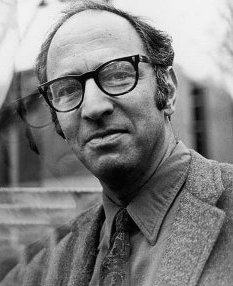(Latest addition to the “What is a Philosopher, Anyway?” series. Please read the previous Part 1 for the fascinating personal introduction to this Dynamic and Curious Fellow!)
So, Ludwig Wittgenstein had a strange, even unpleasant, personality; but what of his philosophy?
Bertrand Russell* has declared that there is Wittgenstein 1 and 2. “Witt 1” showed up at Russell’s Trinity College quarters in about 1920. After about a year of working with Ludwig, Russell had nothing more to teach him, he has said. Russell saw Wittgenstein as the heir-apparent to his Logical and Analytical turn in philosophical method. It was at this point that The Tractatus Logico-Philosophicus was written and supposedly was the basis to answer, or eliminate, all philosophical issues. (*On Russell, see the post, Philosophers and Mathematics.)

The Tractatus is an unusual book. It is only 75 pages long and written somewhat in the style of notes with numbered main ideas and subsequent supporting contentions also numbered to designate their subsequent status. 1.0 is a main point, 1.1, 1.11, 1.111 are contentions supporting it in declining significance and corresponding spacing. Its opening and closing lines are famous: “The world is all that is the case” and “Whereof one cannot speak, thereof one must remain silent.” In The London Times obituary, the book was called “a logical poem”(Wittgenstein died of cancer at 51).
The Tractatus is the presentation of a position called Logical Atomism. Witt 1 felt he demonstrated how some words or propositions “map” the world. They, among all the different kinds of statements we make, are unique. He contended that these pieces (the “atoms”) could be “logically” built up to display all the propositions or beliefs that could be sensibly stated or truthfully contended or “realistic.” They are what can be “said” with the backing of the world. They “make sense,” almost literally, because our sense organs are the connection between them and the individual chunks or facts of the world.
Many of the things we say do not fall within this group. They are not factual, not closely supported by our factual propositions that map the world. We cannot use our sense organs to verify them; therefore Wittgenstein could call them “nonsense.” But curiously, to him, this was NOT a completely negative designation. It just meant that they were statements beyond “fact.” Witt 1 had great respect for many of these more ethereal utterances; for one thing, philosophical statements were among them. They were just not connected to the world like factual propositions, or maybe not connected to the world at all (?).
Now it should be pointed out that this idea of words or propositions “mapping” ‘the world’ seems straightforward, but it is not. In what sense does the word “dog” designate, or hook onto, or point at, or represent, or is caused by all those furry (well I guess a few are furless), four legged, barking (some howl) creatures from the Chihuahua to the Saint Bernard? We often say our words “picture” what they represent, but how do the lines and squiggles that form the letters “D”-“O”-“G” draw a picture of anything, or the sounds of a hard D, soft O, hard G force themselves on us so that they are necessarily related to all those various kinds of dogs out there in the world, or anything that might compose them, like atoms or biochemical molecules or or? And Spanish-speaking people use very different lines and sounds —“perra” or “perro”— to function in the same way. But, Witt 1 thought he had successfully tip toed through these tulips by demonstrating that the “logical form” of factual propositions did “mirror” or “map” the logical form of the world or objective reality in a unique and accurate way.

Wittgenstein 2 gave up the contention that factual propositions “map the world” while other kinds of propositions do not. In his later thinking, language as a “map” is given up for language as a “tool,” and all kinds of statements —and depictions, as in the above Picasso— are now on a more equal footing. All forms of expression —and their related forms of activity—open up the world, we might say, in their own way. Each, like a tool (maybe like a can opener) reveals something of its own about “the world,” opens the world up to us in a different way.

Now what is interesting is that Witt 2 never published much of his new thinking, in fact in his life all he published was the Tractatus and two minor articles. His new ideas swirled around Cambridge and Trinity College in England by word of mouth, from those who attended his lectures and discussion groups. Later, after his death, his extensive Philosophical Notebooks were edited and published.
His initial thinking was Atomistic. The real and most important elements the world (or human knowledge of the world) is its littlest pieces, but his later philosophy was Holistic. At one point he used the idea of a thread or rope as an example. No one fiber runs the length of the thread or rope. No one fiber gives it its strength. It is the intertwining and overlap of each fiber with those around it; that is the value and usefulness of each one. The essence of the thread or the rope is in the unity and organization of the pieces that compose it.

An example of this holism is Wittgenstein’s new approach to language. It has already been suggested that all forms of language were now taken to be more on a par, and propositions about objects in the external world were now given no special status. The new focus was on what a language did to and for the people using it, and that was to tie them into a unit –a whole– and reveal a “world” appropriate to their way of life. The new “center” of language was not to function to get to an independent and pre-existing factual world, but to be a central part of a way of life that functioned well for its users.
Witt 2 then believed that he had demonstrated that a language — any and every language — was necessarily a public and social product. There is no such thing as a private language. No single person, no matter how smart, could create a language from scratch. There is no route from non-language to real and effective language-use for an isolated individual. Social interaction provides The Reflective Perspective that allows a person to not only “look at objects” — objectify things — but also to “look at themselves” within their words. Language inherently allows us to ‘take the place of the other’ and ‘see’ ourselves both objectively and subjectively, at once.

Now this new anthropocentric view of language immediately suggests to us the issue of inaccuracy. If all kinds of talk “open” the world to us in different ways –artistic, ethical, scientific ways– what makes any way of talking incorrect or mistaken? Don’t our ideas have to match objective reality to be true and effective?
Interestingly, Witt 2 argues that this question is significantly misguided. The question can be made into deep philosophical confusion. It seems to suggest that somehow humans can lose touch with the world, that ideas and ways of life that we do not agree with or think are incorrect Float Free of Reality as if Mirages, and are disconnected from Reality’s Causal and Informative Networks. In modern society, we have often believed that science displays reality but art is only beautiful; that ethics is important but more a product of human preferences than natural forces. Wittgenstein’s concern was that “Subjectivity” can no more be cut off from “Objectivity” in this radical way, than the color black be cut off completely, and made independent of, the color white.
Whether Witt 2 actually accomplishes this Holistic view, is hard to say. He argues that it is not the world that justifies the ways we talk and think and act, but the self-supporting character or structure of these ways –“ways of life”– that are accompanied by their own “view of things” that is The True Center of our life. Witt 2 has shifted to this Anthropocentric position: The Human World is its own center, its own support and–in a way– its own making.
(This brief introduction to Wittgenstein’s thinking has wetted my appetite for more. I have begun to reread a short but notable book by philosopher David Pears: “Ludwig Wittgenstein,” 1970, (198 pages). I am looking forward to attempting to relay its significance to you.)


By the Marvelous Marty.





































